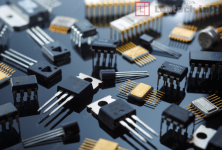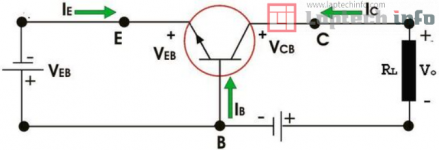BASIC KNOWLEDGE - BIPOLAR JUNCTION TRANSISTOR An introduction to the bipolar junction transistor (BJT)

Invented in the early 1950s, the bipolar junction transistor (BJT) revolutionized the field of electronics. The transistor is the foundation of computer memories, microprocessors, and other integrated circuits. A bipolar junction transistor (bipolar transistor or BJT) is a type of transistor that uses both electrons and holes as charge carriers.
A bipolar junction transistor, also called bipolar transistors, is a three-terminal device that can function as electronic switches or signal amplifiers. In this article, we'll go through the basics of this type of transistor.
What is a bipolar junction transistor (BJT)?
Simply put, a BJT is a three-terminal semiconductor device. The name "bipolar" comes from the fact that this type of transistor contains two types of semiconductor material—one positive type (p-type) and one negative type (n-type)—through which a current flows. Bipolar junction transistors usually contain silicon. Moreover, impurities are commonly added to the silicon via doping to make the layers behave as desired.It's the p-type layers in a BJT's job to attract the electrons that enter the transistor through its input circuit. The n-type layers, on the other hand, should encourage electrons to flow out of the transistor. This push-and-pull effect between the layers enables the electrical current to be amplified and controlled.
The configuration of the layers in a BJT determines the electrical current's flow and ensures that a charge can't return in the same direction as it came. This setup protects the system from overheating or becoming damaged.
A three-layer sandwich
BJTs are created by layering p-type and n-type silicon to form a three-layer “sandwich”:- The base, to which a small starting current is attached
The emitter, which emits electrons - The collector, which collects the electrons that have been amplified. Electrons are passed between from the emitter to the base.

Bipolar junction transistor (BJP) workings.
There are two types of sandwiches: NPN (negative-positive-negative) and PNP (positive-negative-positive). The former switches on when the current flows through the base, while the latter switches on only when there’s no current in the base. When electrical contacts are placed on all three silicon layers and the current is switched on, the electrons in the current will flow between the n-type and p-type silicon layers.In an NPN sandwich, amplification occurs when a small positive current is attached to the p-type layer (the base). Here, one of the n-type layers (the emitter) is negatively charged, while the other (the collector) is positively charged. In an NPN Sandwich, electrons are attracted to the base from the emitter. The electrons then move from the emitter to the collector; this movement creates a higher current flow between the two n-type layers.
The development of BJTs
Invented by the physicist William Shockley in 1947, the BJT has gone through a number of iterations over the years. Until the 1960s, germanium was used in the layers. Towards the end of the century, germanium was replaced by silicon, a material demonstrating more thermally stable. The speed of the BJT was incrementally increased through the process of doping, leading to the invention of BJT variants such as:- micro-alloy,
micro-alloy diffused
post-alloy transistors
the diffused transistor, which, as the name suggests, works by diffusing impurities into the semiconductor, and - the planar transistor, which made it possible to mass-produce integrated circuits, thereby kickstarting the consumer electronics
Basic applications
BJTs are often combined with MOSFET transistors to facilitate high-speed digital logic, which is essential for the operation of radio frequency technology and high-end microprocessor chips. Moreover, BJTs combined with a MOSFET allows chips to be radiation hardened for use in satellites, nuclear reactors, and particle accelerators.BJTs also serve as the basis for commercially available electronic amplifiers and temperature sensors. Finally, BJTs can be used as logarithmic converters, which compress the dynamic range of a signal to make it more manageable for other circuits to handle.
